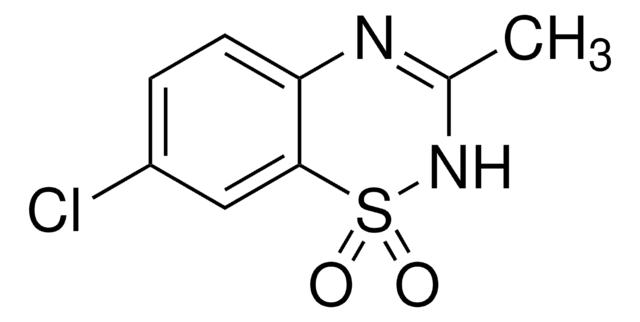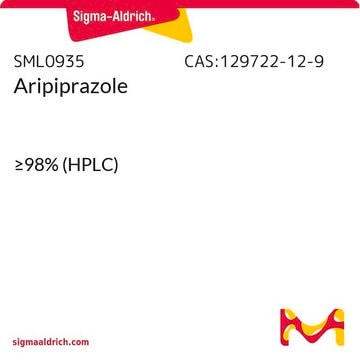H135
5-Hydroxydecanoic acid sodium salt
≥97% (HPLC)
Synonym(s):
5-hydroxydecanoate sodium salt
Sign Into View Organizational & Contract Pricing
All Photos(4)
About This Item
Empirical Formula (Hill Notation):
C10H19NaO3
CAS Number:
Molecular Weight:
210.25
MDL number:
UNSPSC Code:
12352106
PubChem Substance ID:
NACRES:
NA.77
Recommended Products
Quality Level
Assay
≥97% (HPLC)
form
powder
storage condition
desiccated
color
white to beige
solubility
H2O: 10 mg/mL, clear
SMILES string
[Na+].CCCCCC(O)CCCC([O-])=O
InChI
1S/C10H20O3.Na/c1-2-3-4-6-9(11)7-5-8-10(12)13;/h9,11H,2-8H2,1H3,(H,12,13);/q;+1/p-1
InChI key
YNAGNECWEKMWRM-UHFFFAOYSA-M
Biochem/physiol Actions
Blocks post-ischemic actions of the K+ channel activator cromakalim.
Features and Benefits
This compound is featured on the Potassium Channels page of the Handbook of Receptor Classification and Signal Transduction. To browse other handbook pages, click here.
Caution
Hygroscopic
Storage Class Code
11 - Combustible Solids
WGK
WGK 3
Flash Point(F)
Not applicable
Flash Point(C)
Not applicable
Personal Protective Equipment
dust mask type N95 (US), Eyeshields, Gloves
Choose from one of the most recent versions:
Certificates of Analysis (COA)
Lot/Batch Number
Don't see the Right Version?
If you require a particular version, you can look up a specific certificate by the Lot or Batch number.
Already Own This Product?
Find documentation for the products that you have recently purchased in the Document Library.
Customers Also Viewed
G J Grover et al.
Journal of cardiovascular pharmacology, 16(6), 853-864 (1990-12-01)
The detailed antiischemic pharmacology of the potassium channel activator cromakalim was determined in isolated globally ischemic rat hearts and a canine model of coronary occlusion and reperfusion. Cromakalim significantly improved reperfusion function in rat hearts starting at a concentration of
Samy Talha et al.
Journal of applied physiology (Bethesda, Md. : 1985), 114(2), 172-179 (2012-10-30)
Brain natriuretic peptide (BNP) reduces the extent of myocardial infarction. We aimed to determine whether BNP may reduce skeletal muscle mitochondrial dysfunctions and oxidative stress through mitochondrial K(ATP) (mK(ATP)) channel opening after ischemia-reperfusion (IR). Wistar rats were assigned to four
Zhang-Feng Wang et al.
Basic research in cardiology, 108(1), 318-318 (2012-12-04)
Postconditioning (Postcon) reduces infarct size. However, its role in modulation of cardiac repair after infarction is uncertain. This study tested the hypothesis that Postcon inhibits adverse cardiac repair by reducing degradation of extracellular matrix (ECM) and synthesis of collagens via
Ischemic preconditioning of the right ventricle: a new application for an old concept?.
Tuvia Ben Gal et al.
Cardiology, 123(3), 175-176 (2012-11-07)
Ischemia reperfusion injury, KATP channels, and exercise-induced cardioprotection against apoptosis.
John C Quindry et al.
Journal of applied physiology (Bethesda, Md. : 1985), 113(3), 498-506 (2012-06-02)
Exercise is a potent stimulus against cardiac ischemia reperfusion (IR) injury, although the protective mechanisms are not completely understood. The study purpose was to examine whether the mitochondrial or sarcolemmal ATP-sensitive potassium channel (mito K(ATP) or sarc K(ATP), respectively) mediates
Our team of scientists has experience in all areas of research including Life Science, Material Science, Chemical Synthesis, Chromatography, Analytical and many others.
Contact Technical Service











